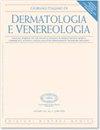Artificial intelligence for melanoma diagnosis: a review of published studies until 2020.
IF 2
Q3 Medicine
Giornale Italiano Di Dermatologia E Venereologia
Pub Date : 2020-11-12
DOI:10.23736/S0392-0488.20.06753-X
引用次数: 0
Abstract
Convolutional neural networks (CNN) have shown unprecedented accuracy in digital image analysis, which can be harnessed for melanoma recognition through automated evaluation of clinical and dermatoscopic images. In experimental studies, modern CNN architectures perform single image analysis at the level of dermatologists and domain-experts, also for multi-class predictions including a multitude of possible diagnoses. This may not necessarily translate to good clinical performance, and reliable randomised controlled prospective clinical trials for modern CNNs are essentially missing. Weaknesses of CNNs are that limitations of available training image datasets propagate to limitations of CNN predictions, and they can not provide a reliable estimate of uncertainty. Recent research focuses on human-computer collaboration, where gains in accuracy were measured even with imperfect CNNs. With missing academic and clinical agreement on equivocal melanocytic lesions, fully automating histologic assessment of them with CNNs appear problematic, and applications in the near future are probably limited to supporting, referencing or recommendation roles.人工智能用于黑色素瘤诊断:截至2020年的已发表研究综述。
卷积神经网络(CNN)在数字图像分析中显示出前所未有的准确性,可以通过自动评估临床和皮肤镜图像来识别黑色素瘤。在实验研究中,现代CNN架构在皮肤科医生和领域专家的水平上执行单个图像分析,也用于包括多种可能诊断的多类别预测。这可能不一定转化为良好的临床表现,而且可靠的随机对照前瞻性临床试验对现代cnn基本上是缺失的。CNN的缺点是,可用的训练图像数据集的局限性会传播到CNN预测的局限性,并且它们不能提供可靠的不确定性估计。最近的研究集中在人机协作上,即使使用不完美的cnn,准确率也有所提高。由于缺乏学术和临床对模棱两可的黑色素细胞病变的一致意见,用cnn对它们进行完全自动化的组织学评估似乎是有问题的,在不久的将来,应用可能仅限于支持、参考或推荐角色。
本文章由计算机程序翻译,如有差异,请以英文原文为准。
求助全文
约1分钟内获得全文
求助全文
来源期刊

Giornale Italiano Di Dermatologia E Venereologia
DERMATOLOGY-
CiteScore
1.90
自引率
0.00%
发文量
0
审稿时长
6-12 weeks
期刊介绍:
The journal Giornale Italiano di Dermatologia e Venereologia publishes scientific papers on dermatology and sexually transmitted diseases. Manuscripts may be submitted in the form of editorials, original articles, review articles, case reports, therapeutical notes, special articles and letters to the Editor.
Manuscripts are expected to comply with the instructions to authors which conform to the Uniform Requirements for Manuscripts Submitted to Biomedical Editors by the International Committee of Medical Journal Editors (www.icmje.org). Articles not conforming to international standards will not be considered for acceptance.
 求助内容:
求助内容: 应助结果提醒方式:
应助结果提醒方式:


